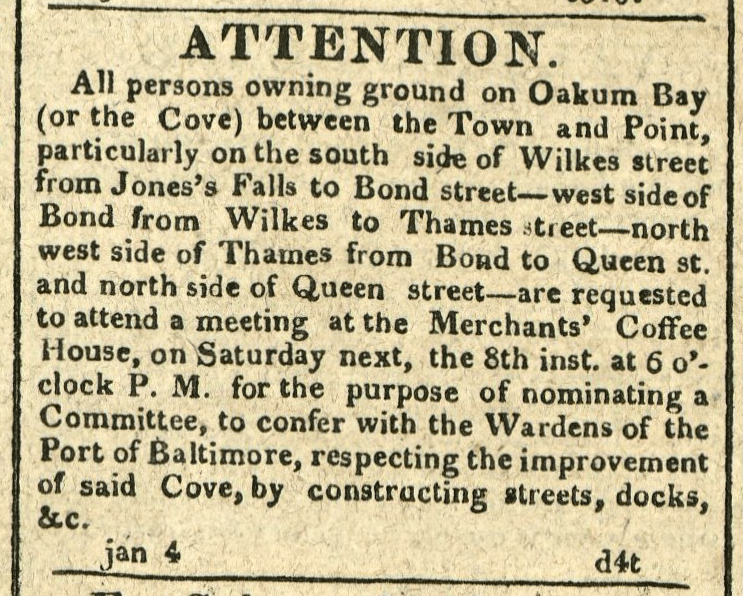
In 1783, Maryland established the “Wardens of the Port of Baltimore” to oversee the construction of wharves, to help maintain clear waterways, and collect duties from vessels entering and leaving the Port. By the early 1800s, the marshy cove at the bottom of the Jones Falls — also known as Oakum Bay for the a tarred fiber “oakum” used in caulking and shipbuilding — posed a significant public health hazard. An 1808 report on the origins of Baltimore’s frequent yellow fever epidemics pointed a finger at the cove as a “sink of putrefaction,” continuing:
“So offensive were the effluvia emanating from this source of death that it affected those who had occasion to pass it even at a considerable distance interstices.”
The January 8, 1814 public meeting advertised in the American and Commercial Daily Advertiser helped to launch an effort to eliminate this hazard by filling in the cove and build the City Dock still located near today’s proposed Harbor Point development project.